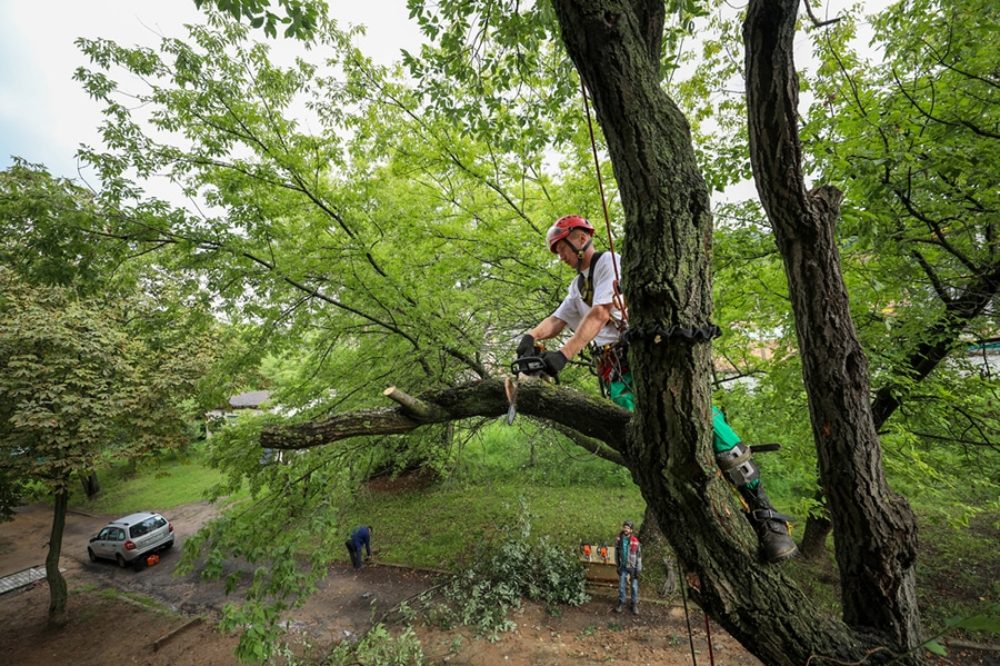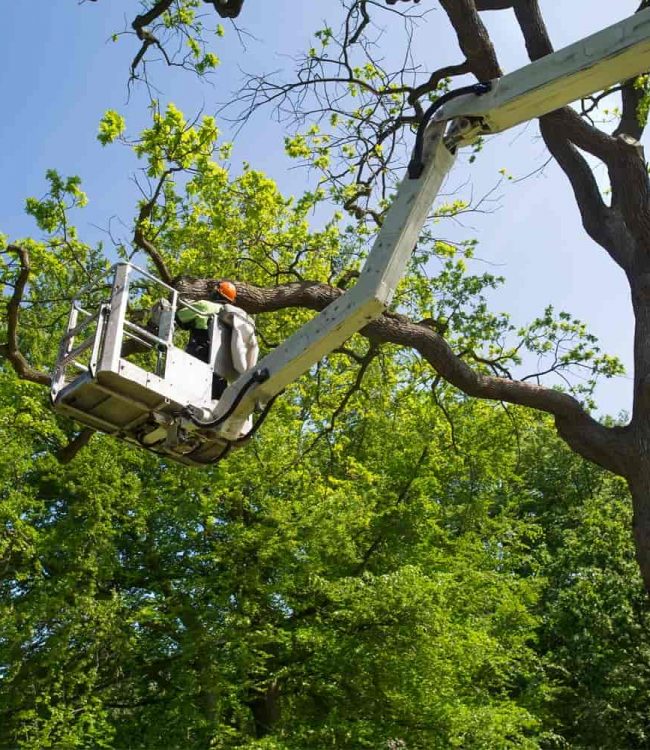Making your home in Peoria, IL means the trees on your property will face many challenges all year long. This is particularly true during the hard local winters. It’s important to know what issues your trees might face as the weather turns colder. It’s also important to know what you can do to help prepare your trees for ice and snow well before winter starts.
Broken and Dead Branches
Ice and snow present various problems for your trees. Ice can harm all parts of your trees, including the trunk and branches. Heavy snow with lots of water adds a great deal of weight to some of the least sturdy parts of your trees. Over time, this can cause the tree’s branches to break off and fall down. If you see a lot of ice or a storm is about to come along, our professional arborists can help prepare your trees and ensure that they get the care they need in bad weather.
Salt Damage
Salt is a useful way of removing ice and snow from your property. However, salt poses risks to your greenery. When snowplows come by to remove the ice and snow, they can coat your trees with salt used to melt icy roads. Salt can also get into the soil on your property and migrate to all parts of your trees, including the roots. It’s hard to control what the city uses to melt ice, but you can do your part by only using ice melt made of calcium chloride. You should also only apply ice melt after you shovel to prevent the product from getting into your soil.
Frost Heaving
Frost is common at the start of winter and all throughout the cold weather season. Even a mild frost can lead to problems for your trees because it is often followed by a period of relatively mild weather. The constant pattern of freezing and thawing can take a toll on your trees. Over time, your trees’ roots can become exposed, making them vulnerable to the elements. Smaller trees can even be uprooted. To prevent these issues, it’s best to cover the base of your trees with a layer of protective mulch.
Winter Burn
Winter burn is a condition where trees are discolored as a result of the effects of winter. A tree may get harmed by this process for a variety of reasons. The sun can pull moisture away from the trees. When the cold weather hits, roots that have frozen can make it difficult for the trees to retain water. Sunny days during the winter heat up the tree’s material. When night falls, the trees can get frozen again, leading to the destruction of the newly formed materials.
Trees need as much care during the winter as they do during the rest of the year. If you have a problem with your trees this winter, reach out to the team at Central Arbor Tree Care in Peoria.






